A Digital Nomad Guide To Living In Santa Marta, Colombia
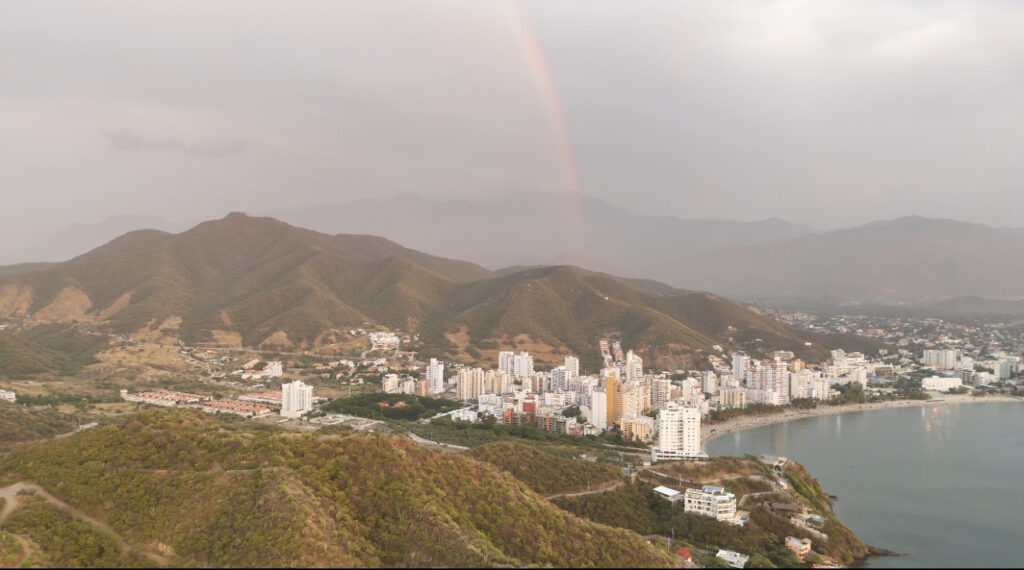
I’ve travelled all over the world and I can say that Santa Marta is one of my favourite places to be a digital nomad.
While the digital nomad community is much smaller than nomad hotspots like Medellin and Mexico City, there is a small, tight-knit group of digital nomads, expats and locals who hang out together and regularly plan fun events each week.
The combination of beaches, mountains and infrastructure in Santa Marta is hard to beat. If you’re looking to live by the beach with excellent fast wifi, an international airport 15 minutes away (most flights come through Bogota, Medellín or Panama City) and modern infrastructure, my top choice is the El Rodadero neighbourhood of Santa Marta.
This area is also incredibly affordable. For example, you can rent a 3-5 bedroom villa near the beach for $600/month, which is less than you may pay for just a room these days in an apartment or coliving space in Medellín.
Many foreigners I have met here liked it so much that they bought an apartment. You can easily find a beachfront condo for well under 100K, especially in the emerging beach neighbourhoods between El Rodadero and Santa Marta’s Simón Bolívar International Airport.
Santa Marta is one of the sunniest places in Colombia, with year-round sunshine most of the day and late afternoon showers in the rainy season. Unlike in Bogotá and Medellín, you don’t get regularly socked in by clouds in the rainy season.
It gets hot in Santa Marta during the middle of the day but there’s usually a strong breeze (what locals call La Brisa Loca) that keeps the air fresh and clean. It’s a few degrees cooler and less humid than Cartagena or Barranquilla with much better beaches.
Plus, whenever you want to escape the heat, you can be in Minca’s cloud forests at elevations similar to Medellín in about an hour.
The Outdoorsy Lifestyle In Santa Marta
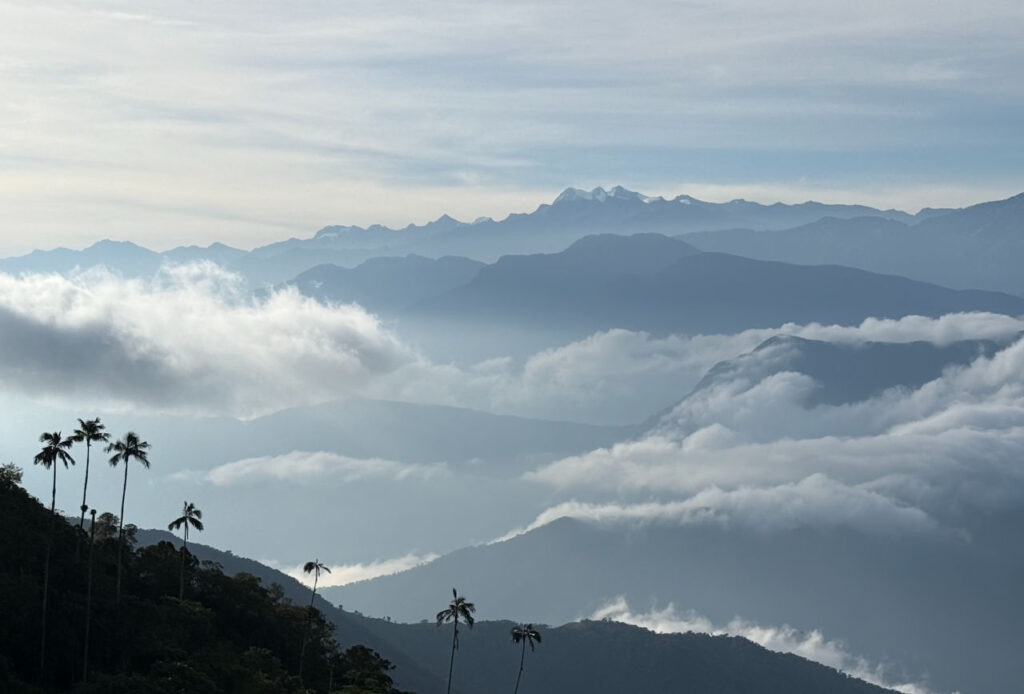
Santa Marta is Colombia’s oldest city (the second oldest in the Americas). It was founded on July 29, 1525, by the Spanish conqueror Rodrigo de Bastidas and in July 2025, the local Costeños will celebrate the 500th anniversary of their city.
Sitting between the Caribbean Sea and the Sierra Nevada de Santa Marta mountains, Santa Marta is perfect for adventurous people who want to lead an outdoorsy lifestyle that combines lots of beach time with mountain hikes.
The Sierra Nevada de Santa Marta is the world’s tallest coastal mountain range and it has the highest peaks in Colombia, Pico Colón at 5,775 meters (18,947 feet) and Pico Simón Bolívar at 5,775 meters (18,947 feet).
On the beaches east of Santa Marta, like Palomino, you can sit on a tropical beach and see these glacier-capped mountains less than 80 miles away.
I first discovered this area when I watched the excellent documentary Aluna about the spiritual wisdom of the indigenous Kogi people and their fight to protect their homeland in the Sierra Nevada. BBC filmmaker Alan Ereira has the best description I’ve heard of the importance of this area:
“Imagine a pyramid standing alone by the sea, each side a hundred miles long. It’s a mountain nearly four miles high. In its folds imagine every different climate on earth. This is the Sierra Nevada de Santa Marta, and the people hidden here call the Sierra the Heart of the World and themselves the Elder Brothers.”
If you love being outdoors when you’re not working online, it’s hard to beat the weather and outdoor recreation opportunities around Santa Marta. Here are just a few of your options:
- Scuba diving in Taganga where there’s world class reefs and aquatic life
- Take a boat trip to world class beaches like Playa Blanca and Playa Cristal
- Hike from El Rodadero to beaches like Inca Inca and Playa Del Amor
- Go camping on the beach at Cabo San Juan in Tayrona National Park
- Surf the breaks in Palomino, Los Cocos or Costeño Beach
- Visit an indigenous villages in the Sierra Nevada
- Float down a lazy river to the ocean in Palomino
- Go waterfall swimming in Minca or Guachaca
- Hike high into the cloud forests in Minca
Here’s a drone video I shot in the cloud forests overlooking the highest peaks in the Sierra Nevada de Santa Marta that I filmed on a nature retreat in El Dorado Reserve just above the town of Minca.
As you can see, this area of Colombia is one of the best places in Latin America for nature lovers!
The Pros And Cons Of Living In Santa Marta:
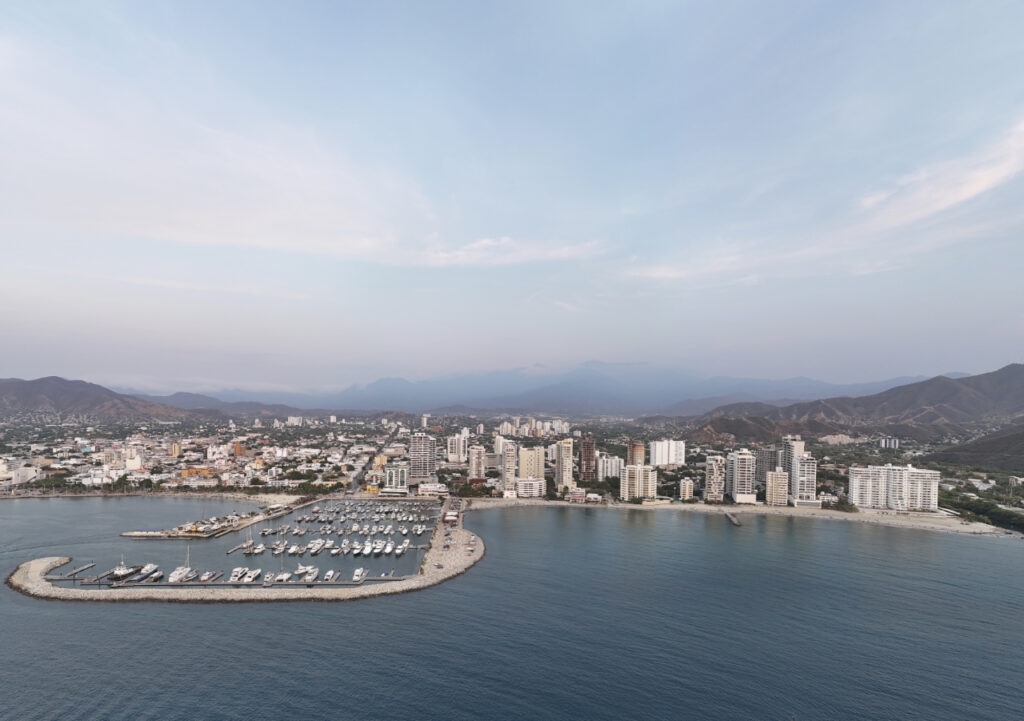
While Colombia offers a lot of great options for digital nomads and expats, I think Santa Marta is really unique in its combination of history, beaches and mountains.
I like to describe the area as a combination of Mexico and Costa Rica. The area around Santa Marta is sunny and arid with cacti like Oaxaca in Mexico but it also has beaches and jungle like Costa Rica in Tayrona National Park and to the east in Palomino as well as cloud forests with great hiking up in Minca.
There is much less hustle and bustle here than in Bogota or Medellin. I’ve heard that salaries for professional jobs tend to be 50% less on the coast, so it makes it difficult for most Colombians to move here. Plus, the biggest industries here are tourism, natural resources and real estate, so there are a lot fewer economic opportunities here.
The upside of this is that Santa Marta rentals and real estate prices are much cheaper than larger Colombian cities, which is great if you’re planning to work remotely here.
Here are some the pros of living in Santa Marta:
✅ Much lower cost of living compared to Bogotá, Medellín or Cartagena
✅ Warm, tropical climate year-round with consistent sunshine and a sea breeze
✅ Proximity to nature with jungle, mountains, beaches and national parks nearby
✅ A relaxed, small-city feel with fewer distractions and slower pace than big cities
✅ A growing community and a lot less annoying “hookers & drugs” foreigners
Here are some of the cons of living in Santa Marta:
✅ Wifi can be spotty in some areas, so look for accommodation that advertises fast Internet
✅ There are electric outages in some parts of the city, you need to live in a highly-develop area
✅ Compared to Medellín, Santa Marta has fewer coworking spaces and laptop-friendly cafes.
✅ It’s hot year-round. Much hotter than Medellín but slightly cooler than Cartegena.
✅ In the rainy season, sewers can overflow and make it difficult to get around.
As a much smaller city, Santa Marta isn’t as developed as Medellín when it comes to remote work infrastructure, so knowing the right spots for living and working is essential.
That’s what I’ll cover later in this digital nomad guide.
Why I Chose To Live In Playa El Rodadero
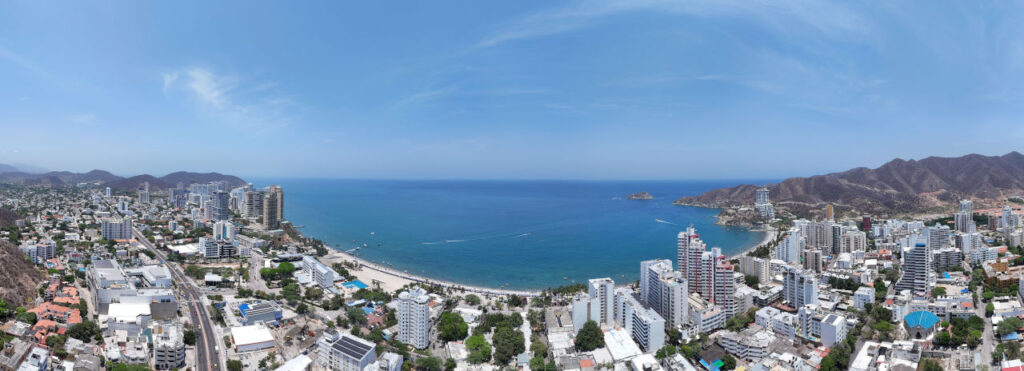
While I enjoy the historical center of Santa Marta, it can feel unsafe at night if you walk down the wrong block (it changes fast). It’s best to stick to the touristy areas at night where there are a lot of great restaurants and nightclubs (La Puerta was my favourite place to dance).
By the beach in El Rodadero it feels very safe and you can also walk around at night because this is probably the most popular year-round beach for Colombians so there are lots of people around enjoying their vacation at all hours of the night.
From El Rodadero, it’s an easy 10-minute drive or a cheap Uber (under 20,000 pesos) over the mountains that separate El Rodadero from the city of Santa Marta.
There’s a great community of young expats and digital nomads in El Rodadero while I found Santa Marta to attract either a very young crowd of backpackers or more of an older crowd of retirees.
I’m usually in Santa Marta in the winter so I can escape the cold in Canada but I’d probably like it even more in the rainy season when you get refreshing showers in the late afternoon (it only rains occasionally rather than nearly every day in other parts of Colombia).
Finding Coworking And Coliving Spaces In The Area
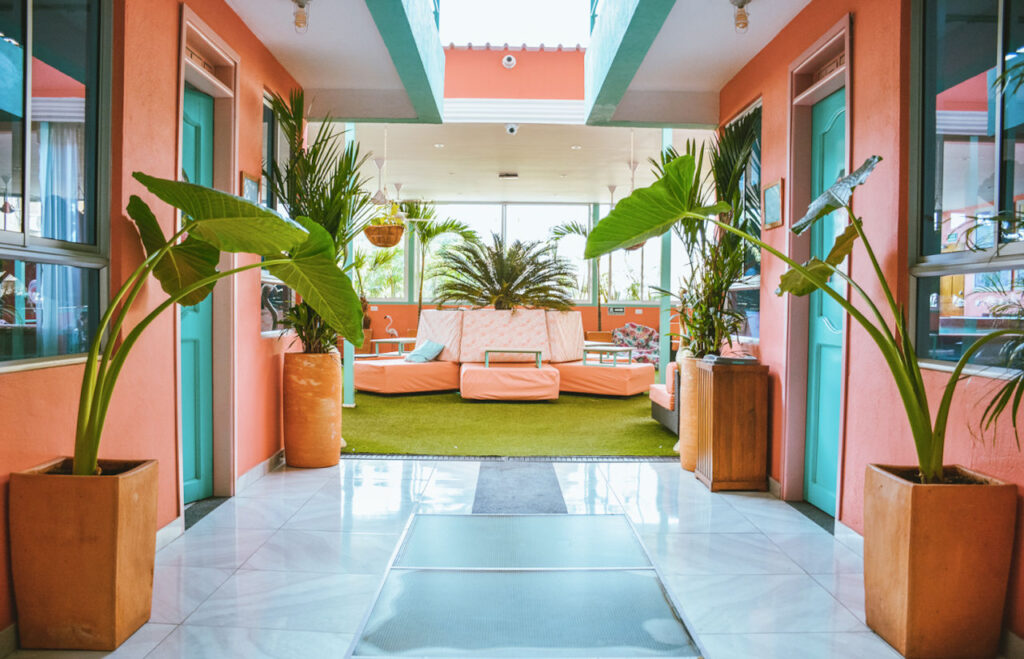
Here are some of your options for coworking and coliving in Santa Marta:
1. Flamingo Coworking – This was my favourite coworking space. It shares a building with a backpacker hostel and the biggest rooftop club in Santa Marta called La Brisa Loca, which is a lot of fun.
2. Caworking – I never checked this place out but it’s in a mall and there are a lot of great reviews.
3. Masaya Hostel – This well-designed Colombian coliving-like chain of hotels has a good coworking space and a pool.
4. Republica Hostel – Another hostel with a good workspace setup, ideal for networking with other travellers and entrepreneurs.
5. MuchoSur Santa Marta – This place has a nice rooftop pool and restaurant but I disliked their coworking space because it felt cramped and the ergonomics were awful with old chairs.
6. Arrecife Mall – The mall in El Rodadero has a free coworking space that is air-conditioned. There’s also a good Juan Valdez Cafe in the mall for coffee.
Best Cafés for Working In The Area
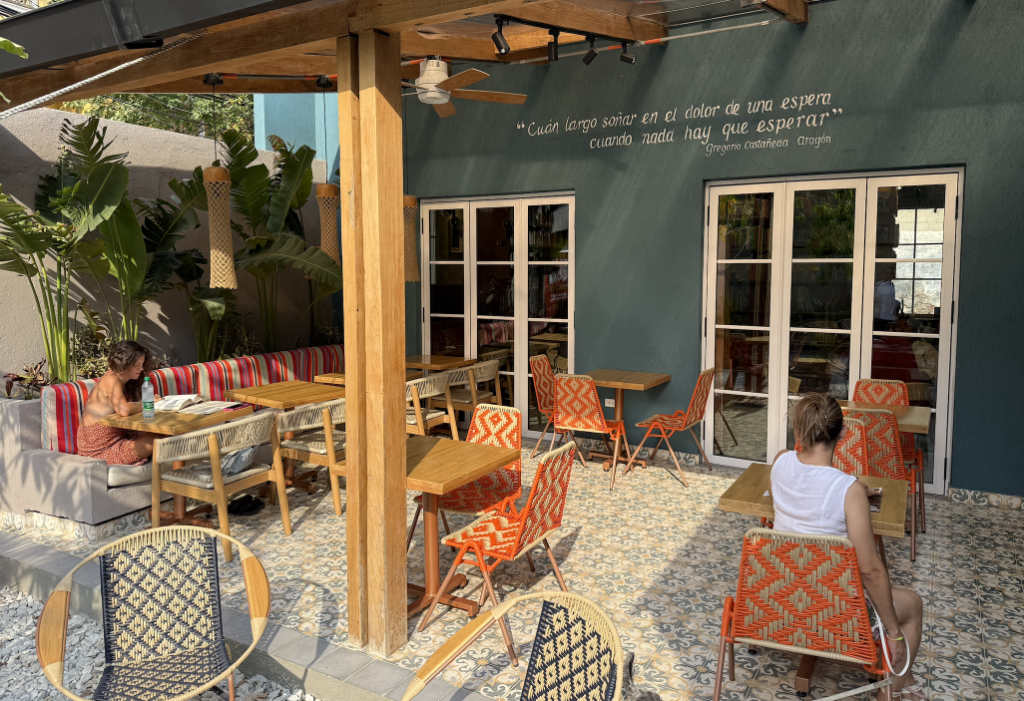
1. Café De Pombo – This new upscale library-style cafe was my favourite place to work. The coffee and food is top notch, the washrooms are clean and the wifi is fast.
2. Vívolo Café – This funky cafe on the waterfront causeway has beautiful art and good coffee with strong wifi.
3. Ikaro Café – Strong WiFi, amazing coffee, and a relaxed vibe. They have great vegetarian and vegan food.
4. Lulo Café – A popular spot with healthy food, good WiFi, and a central location. Can get busy, so morning hours are best for working.
5. La Canoa – A quieter spot with a good atmosphere for working, plus some of the best coffee in Santa Marta.
Pro Tip: Internet speeds can fluctuate, so always have a SIM card with mobile data (Claro or Movistar) as a backup when working remotely. With Claro, I pay 40,000 COP ($10 USD) a month for $60 GB of data.
Where To Stay And Visit In The Area
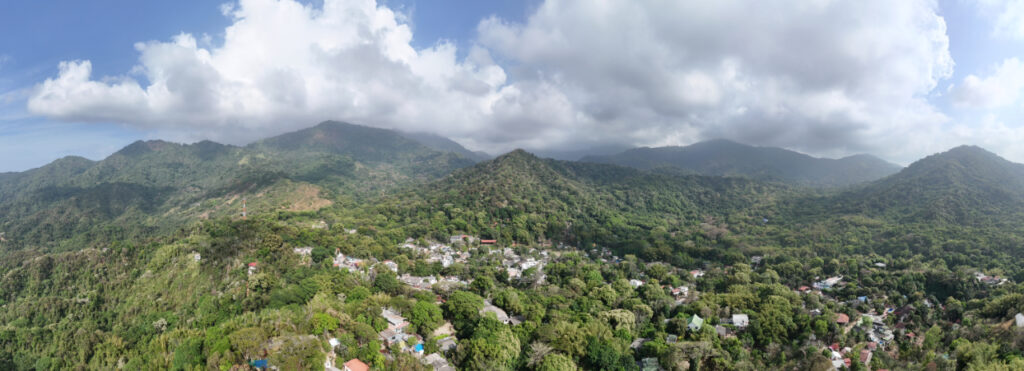
Your choice of neighborhood will impact your experience as a digital nomad. Santa Marta has a mix of areas, each with its own vibe.
1. El Centro (Historic Downtown) – Best for culture, nightlife, and easy access to coworking spaces and cafés. However, it can be noisy at night and can feel unsafe if you walk down the wrong block.
2. El Rodadero – A more modern, residential area with beachside apartments, supermarkets and a resort-style atmosphere. Good for long-term stays.
3. Minca – A peaceful mountain retreat with incredible nature and cooler weather. Internet can be slow, so it’s best for digital nomads who don’t rely on high-speed WiFi all the time.
4. Taganga – A small fishing village popular with divers and backpackers. It’s scenic but not ideal for remote work due to unreliable WiFi.
5. Palomino – A hippie surf town about 90 minutes drive from Santa Marta. The wifi here can be spotty but it’s improved a lot of in the last two years.
6. Los Cocos – I really like this small town on the beach just east of Tayrona National Park. It’s quiet, there’s lots of waterfalls and indigenous villages that you can visit on a short hike in the mountains.
Tip: If you plan to stay for a month or more, check out the Digital Nomads in Santa Marta Facebook Group for rental options or use Airbnb for flexible stays.
Networking And Social Life In Santa Marta
Santa Marta’s digital nomad community isn’t as established as in Medellín or Bogotá but it’s growing fast.
The best ways to meet locals, travellers and other digital nomads is through Couchsurfing or local Whatsapp groups. There is an excellent Digital Nomad WhatsApp group run by a great American guy named Tony.
You will also find some digital nomad and expat Facebook Groups and Meetups where people occasionally post events like brunches, language exchanges and workshops.
When I spend the day working at nomad-friendly cafés like Pombo, Ikaro or Lulo, I’ll usually meet at least one new person.
If you’re looking for nightlife, there is great dancing at La Brisa Loca and La Puerta. Colombians are really friendly, especially the Costeños on the coast, so it’s easy to meet people here.
If you’re thinking of spending a few weeks or months in Santa Marta, I hope this guide has given you some ideas to get started once you land in the city.
If you have any questions about Santa Marta or El Rodadero, feel free to reach out.

